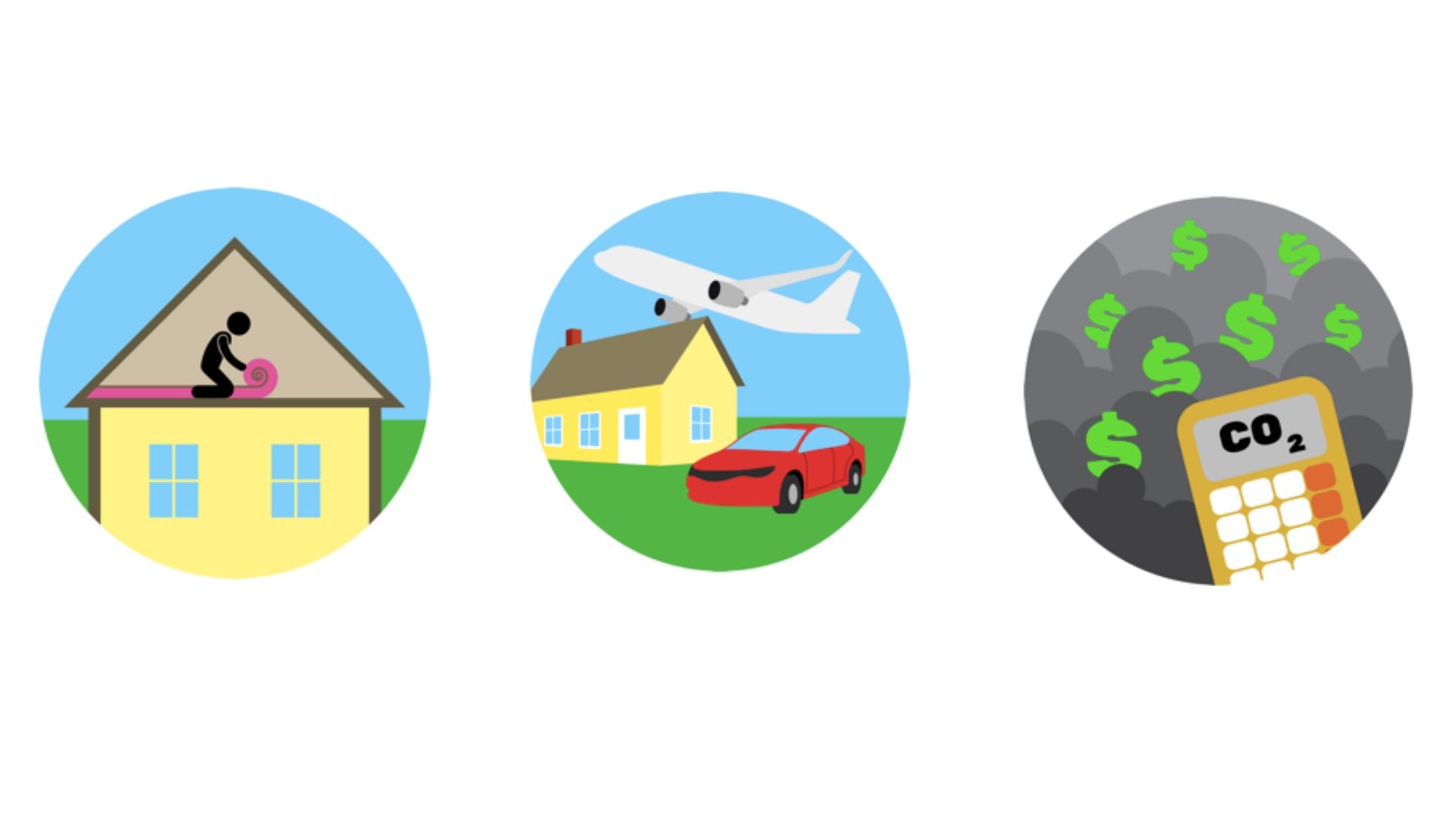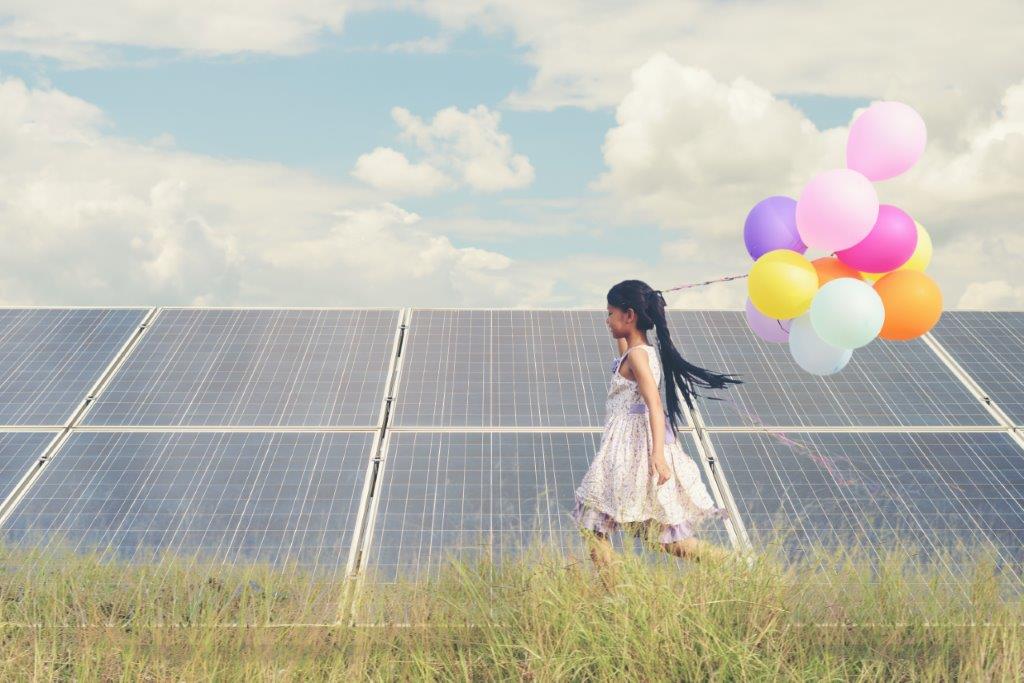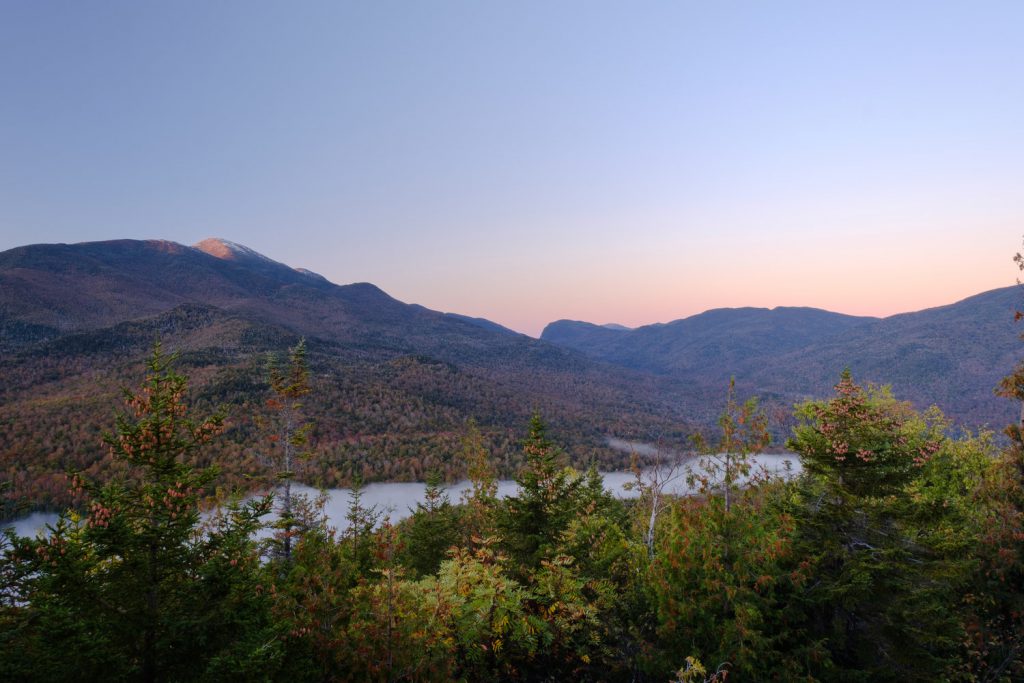This is the first post in our Community Climate Champions series highlighting individuals and organizations building a better future for their neighborhoods. In this edition, we focus on the Finger Lakes Climate Fund.
In Ithaca, New York, an innovative carbon offset program is giving local residents the chance to contribute to and benefit from local clean energy and energy efficiency projects.
Created by Sustainable Tompkins to advance an equitable and sustainable energy system, the Finger Lakes Climate Fund has raised over $25,000 and offset almost 9 million pounds of carbon dioxide emissions. On top of that, it’s providing a simple way for community members to support one another in their mission to save money and support the environment.
With big new renewable energy commitments across New York, including the city of Ithaca, the Climate Fund can play a crucial role in meeting local climate goals.
Table of Contents
What Is a Carbon Offset?
A carbon offset allows you to “cancel out” carbon emissions by reducing an equivalent amount of emissions somewhere else.
Let’s say I drive 1,000 miles in my 30 mile-per-gallon car. I can calculate the trip’s total greenhouse gas emissions (1,571.2 lbs, according to the Climate Fund’s website). Then I can invest in a project that eliminates carbon from the atmosphere. The amount I pay is just enough to offset 1,571.2 lbs of carbon emissions–on the Climate Fund’s site, it costs me $19.64.
So while investing in carbon offsets doesn’t reduce your personal emissions (I still went on that car trip), it does act to reduce total emissions. It’s a simple way to give back to the environment.
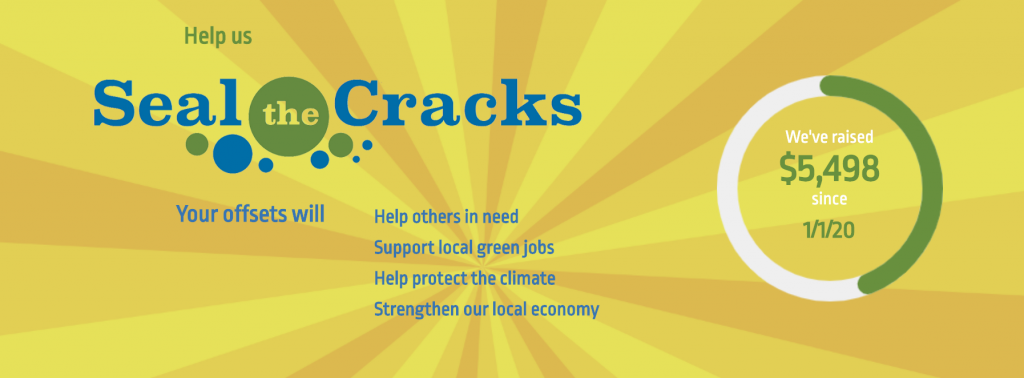
But according to Climate Fund Coordinator Marisa Lansing, there is “a lack of transparency” around carbon offsets. “A lot of people associate carbon offsetting with booking flights, where you can click to ‘offset emissions’ and something obscure might happen where the airline plants some trees, but there isn’t a lot of follow through and clarity on what actually happens. People don’t have a deep connection with carbon offsetting.”
It’s true: whereas planting trees or installing clean energy on your home make for an intimate connection to eco-friendly work, supporting someone else doing the same is harder to grasp.
The Finger Lakes Climate Fund is bridging that gap, turning vague offsets into concrete local projects that benefit nearby community members.
Making the Intangible Tangible
Does the “offset your trip” button online move you deeply? Probably not. For most of us to spend money on offsets, we need clear vision into their impact.
How do you turn a vague eco-friendly concept into a result people can feel? By connecting those who purchase offsets with the people and projects their money goes to support.
The Climate Fund has three key stakeholder groups: the offsetters, or the people purchasing carbon offsets; the awardees, or the folks who receive funding from the fund’s grants; and the contractors who work on projects for those awardees. Each group has a different affinity for and connection to the fund, so tying them together is key. Here’s how it works:
Everything starts with an offsetter. Going back to my original example, let’s say I wanted to offset my 1,000 mile car ride. To do so, I’d pay $19.64 into the Finger Lakes Climate Fund. The money I and other offsetters pay accrues to grants, which are used to replace old fossil fuel infrastructure and outdated appliances at awardees’ homes. This way, money flows from the people who can afford to make a change to the people who can’t.
The Fund publishes awardees’ stories on their site for offsetters to see. All the offsetters and awardees are local, so it’s easy for them to connect over shared backgrounds and experiences.
Contractors that work with the Climate Fund, meanwhile, are able to secure more work when the carbon offset grants allow a project to go forward. They can serve new customer segments and feel connected to the mission of their work. The carbon offset grants are only awarded to residents earning less than 80% of county median income for their household size.
Everything that goes into calculating offsets and grants is heavily math-oriented. “Everything needs to be vetted and done very professionally and calculated closely,” Lansing told me. “Our partners ask a lot of questions about where their money is going and how carbon emissions are actually being reduced.”
Establishing a price for carbon is actually an extremely touchy subject–one that has stymied conversations over cap and trade or carbon taxes in most political bodies. The Finger Lakes Climate Fund has set the price at $25 per ton. They say that to totally account for the externalities of carbon the cost should be higher, but they don’t want to discourage offset purchases. It’s a delicate balance.
Achieving Social Justice Through Carbon Offsets
In the world of carbon offsets, one’s net impact on carbon emissions is set in stone by the amount they give, but the people who benefit can vary based on the method used to offset those emissions. The Finger Lakes Climate Fund is committed to distributing its upgrade projects to community members in need.
“Based on the conversations I’ve had and the surveys we’ve run over the years, it seems that giving back to the community is a big part of offsetters’ motivation,” said Lansing. “People feel like it’s a service project, not only for a cleaner environment, but also donating to a cause where lower-income families are benefitting through lower energy bills and better health outcomes.”
Awardees from the fund include single-parent families, seniors and caregivers, immigrant families, first time homebuyers, and local nonprofits. This is where the concept of energy democracy comes into play. Economic inequality plays a large role in determining who suffers most from issues like pollution.
Working toward social justice involves pushing ourselves toward a just green transition in a manner where people of color, migrants, and disadvantaged communities can lead the way.
“I know a family whose children suffered from respiratory issues because of a 50-year-old furnace in their basement,” Lansing told me. The family would never have been able to set aside thousands of dollars for a new furnace. Through a grant from the Climate Fund, they were able to install an air source heat pump, eliminating harmful particulates in their home, protecting their children’s health at minimal cost, and earning their small upfront investment back within a year or so. As an extra bonus, once this family signed up for community solar, it meant they were able to make their home net zero, since everything in their house now ran on electricity.
To avoid increasing the financial burden on its awardees, the Climate Fund doesn’t approve any projects that aren’t positive cash flow for the homeowner. Even relatively small savings mean a lot to the families the group supports.
This structure also tips the scales for contractors, who usually struggle to work with low-income people due to a concern that they won’t get a return on their investment.
Lansing predicts a bright future for the Climate Fund’s work toward equity. “We’re based in Ithaca, where in June the Common Council passed a Green New Deal calling for carbon neutrality by 2030. I see the Climate Fund as a scalable Green New Deal solution.”
Racing To a Clean Future
It’s a well-known fact that everything is more fun when it’s turned into a game with points.
The Finger Lakes Climate Fund knows this, and maintains a leaderboard on its website for individuals to track their point totals based on the number and size of their offsets. They call these contests carbon races.
“Everybody knows the clock is ticking when it comes to preventing extreme climate disruption,” their website reads. “We really are in a race against time to wean ourselves from fossil fuels.” Individuals also get a chance to spin a prize wheel when they purchase an offset, earning gift cards to local restaurants and fun spots.
Now, solo sustainability is one thing. Going green alongside your friends and family? That’s the next level of community-building.
With the Finger Lakes Climate Fund, offsetters can join together in teams to sum their impact. “I think the teams have been good so that people can work together,” said Sustainable Tompkins President Gay Nicholson. There is “a feeling of their own team moving up through the ranks once they all pitch in.”
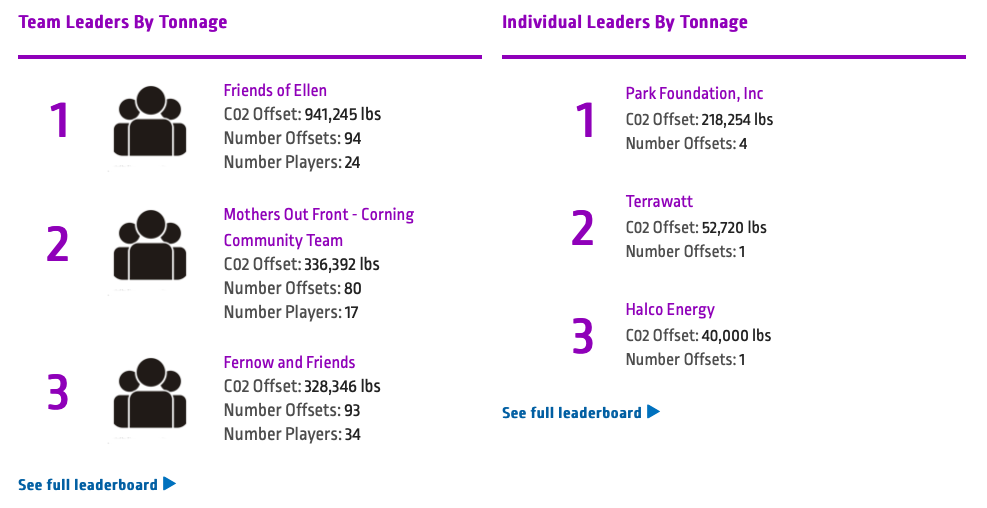
Voluntarily paying extra to live a sustainable lifestyle can be difficult, especially when the people around us aren’t all doing the same. Getting together with a team adds that extra motivation to get people going!
If you’re interested in offsetting a trip, or in signing up for an energy audit and getting a grant process started, head over to the Finger Lakes Climate Fund website or reach out to marisa@sustainabletompkins.org.
Like learning about community solar?
Join our monthly newsletter to hear about more renewable energy news and bold climate challenges.
